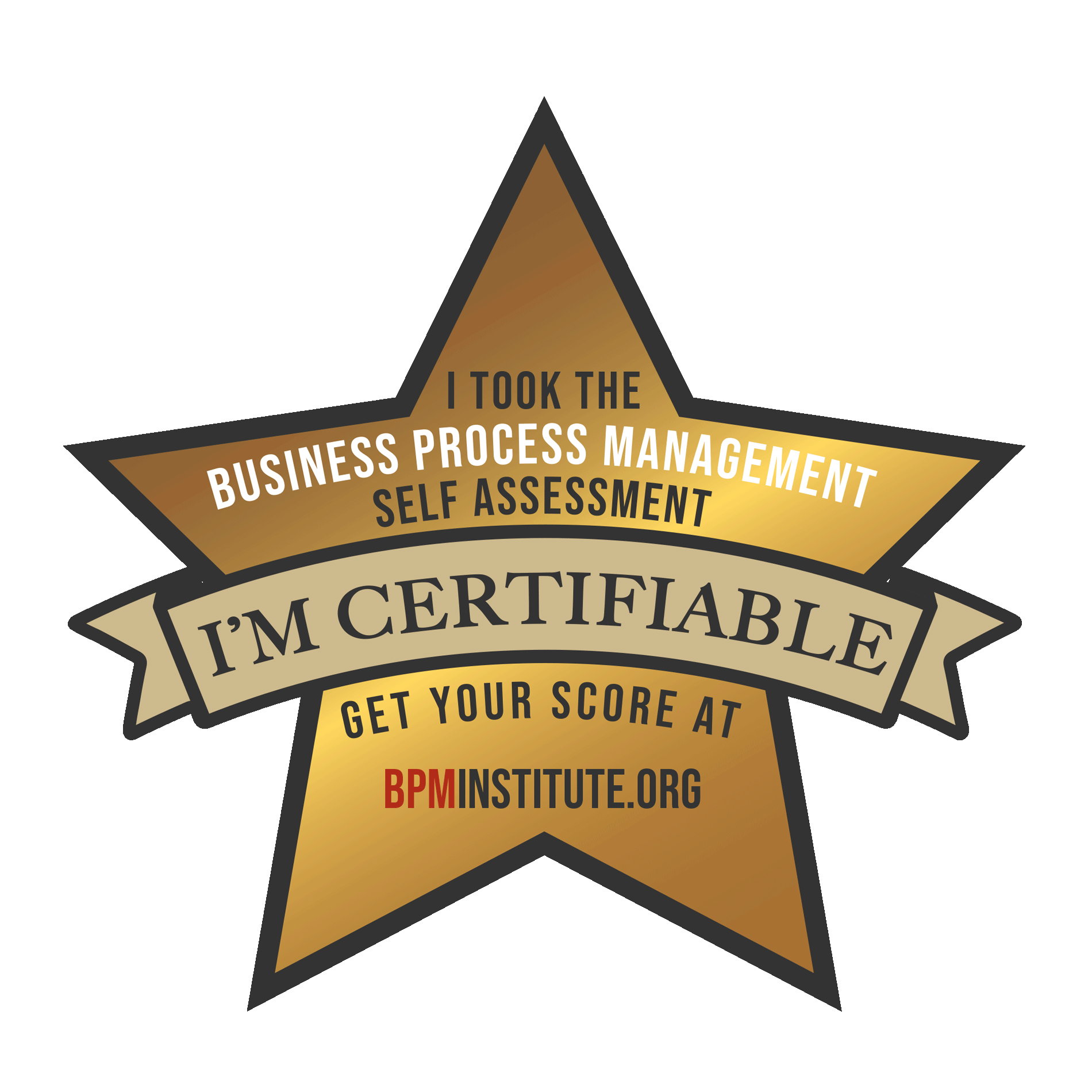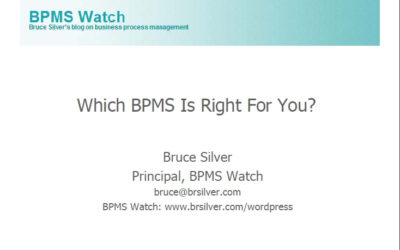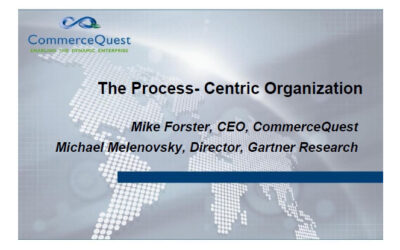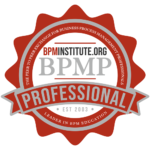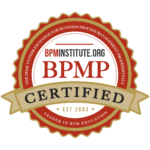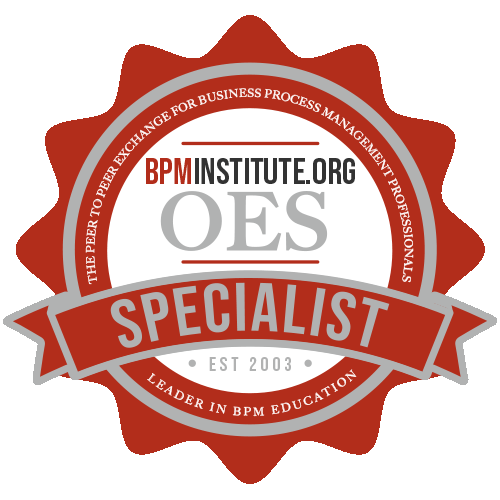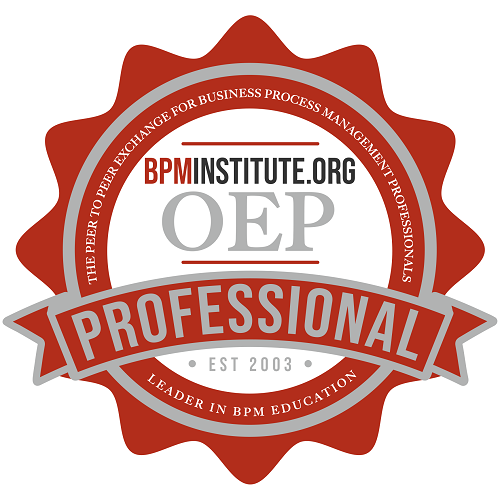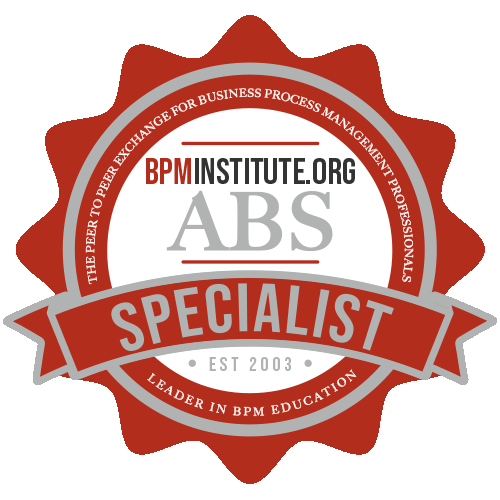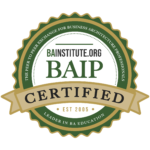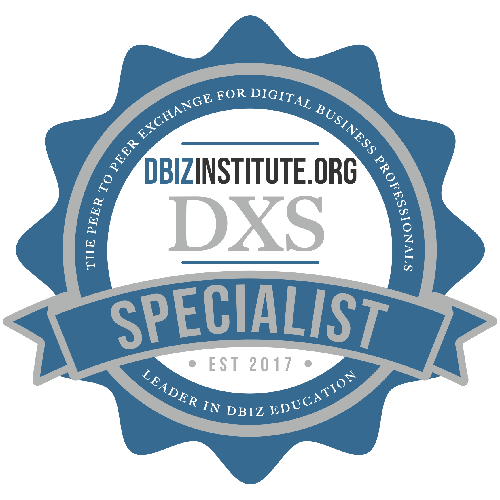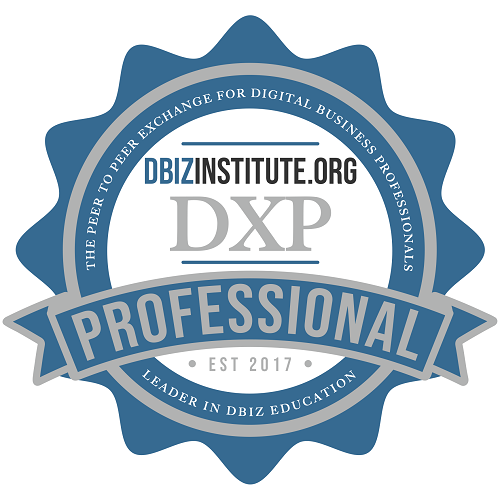Over the past 12 months, we reviewed 11 leading BPM Suites using a common analytical framework, and published the results using a common outline as The BPMS Report series, available for free from BPMInstitute.org. Based on that research, we now offer a comparative scoring of these offerings. Each BPM Suite was rated for both human-centric and integration-centric processes, and the human-centric evaluation was further broken out into two subclasses, production workflow and case management.
June 25, 2003
Professional Member
Associate Corporate Membership
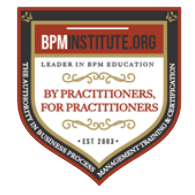
Gregg Rock
Business Architecture (BA)
Digital Transformation (DX)
Agile BPM (AB)
Agile Business Analysis (ABA)
Artificial Intelligence (AI)
Customer Experience
Operational Excellence (OPEX)
Organizational Change Management (OCM)
Robotic Processing Automation (RPA)
Articles by: Gregg Rock
Seeing the World from a Process Point of View
Simon Hayward is chief of research for software and a Gartner fellow emeritus. With an interest in the relationship of business processes, software applications and software infrastructure, he oversees research in the software sector and develops integrative activities between research areas. He will deliver the featured analyst keynote address at the Business Process Management Conference in June in San Francisco.
Enabling the Process-Driven Agile Enterprise
What do Business Process Management, Service-Oriented Architecture, Business Architecture, Business Rules and Organizational Performance all have in common? Well, besides the obvious…
BPMInstitute.org and SOAInstitute.org research shows that companies are planning to marshal these technologies and methodologies together into a comprehensive strategy, platform and discipline.
What do Business Process Management, Service-Oriented Architecture, Business Architecture, Business Rules and Organizational Performance all have in common? Well, besides the obvious…
BPMInstitute.org and SOAInstitute.org research shows that companies are planning to marshal these technologies and methodologies together into a comprehensive strategy, platform and discipline. One that will enable organizations to make better business decisions – more quickly – both in the short term and the long term.
What is BPM Anyway? Business Process Management Explained
BPMInstitute.org defines Business Process Management as the definition, improvement and management of a firm’s end-to-end enterprise business processes in order to achieve three outcomes crucial to a performance-based, customer-driven firm: 1) clarity on strategic direction, 2) alignment of the firm’s resources, and 3) increased discipline in daily operations.
BPM is an enterprise-wide, structured approach to providing the products and services that your customer’s value most. It is grounded in the premise that you must take a process view of your company in order to understand what products and services your customer values most. By understanding the key business processes your company uses to meet these customer needs, the gap between customer expectations and your ability to perform begins to emerge.
Performance Improvement Requires Multi-tiered Approach
Gregg V. Rock talks with Dr. Geary A. Rummler, industry pioneer in process and performance improvement
Dr. Geary A. Rummler’s book, Improving Performance-How to Manage the White Space on the Organization Chart, is considered one of the groundbreaking works in business process and performance improvement. As a co-founder of the Performance Design Lab, he has continued to evolve and expand the theory base and methodologies that can lead to breakthrough approaches to management systems, measurement, strategy, and organization structure design and implementation. His latest book, Serious Performance Consulting According to Rummler, is designed to enable performance consultants to move beyond their focus on individuals to produce organizational results. He talked to Gregg V. Rock, Editor of BPMinstitute.org.


